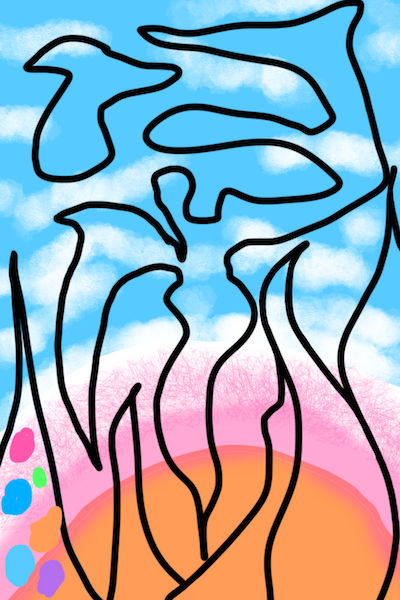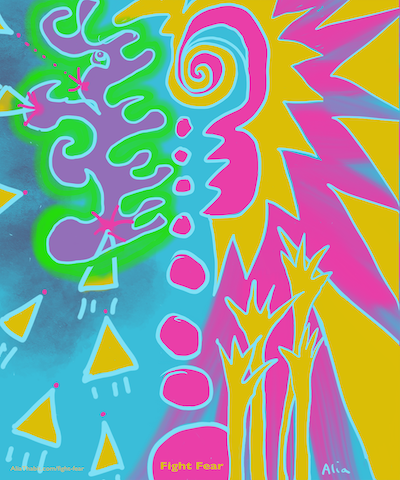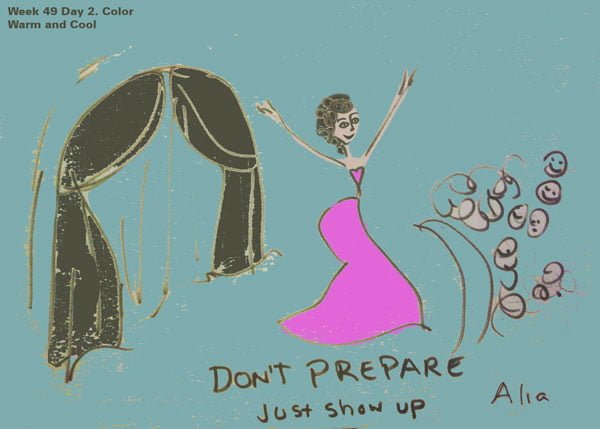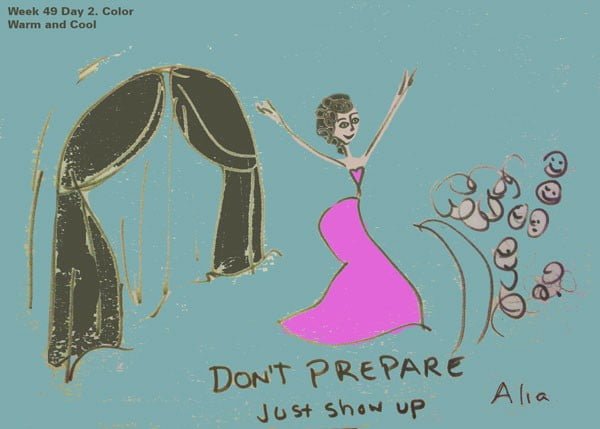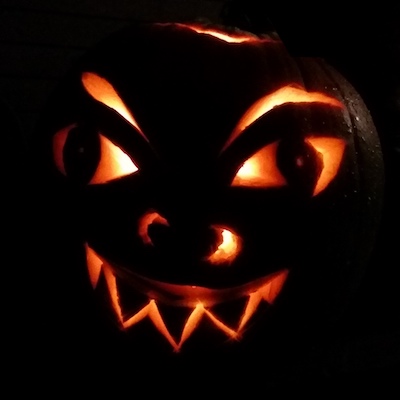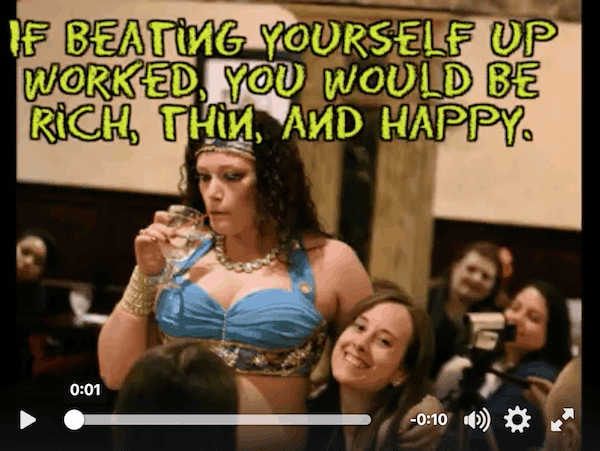What I’m doing is boring…
Despite all of our improv practice, we may still have those panicky moments of feeling trapped and frozen, unable to think of what to do next. This can feel overwhelming–but we can easily escape its grip.
The focus on what to do is part of the problem. Everybody freezes up about what should I do or, what I’m doing is stupid or whatever. We’ve been trained that it’s all about the moves, so we need a constant variety to entertain our jaded guests.
But where our dance shines is interaction.
It’s is funny when dancing at home by ourselves to think about interacting, but we are interacting—with ourselves, with the music, the camera, with our imaginary guests, or our succession of stuffed animals, or our dance persona, or our body, and the sensations that we notice, or the images that come in our head from the music, or maybe the music asks for a certain quality in the movement…
So there are all of these things we can interact with instead of some snide little voice in the head telling us, That’s not good enough (which is always what that voice is telling us, and by the way, it is lying).
But when that little voice gets in there, it has a lot of power.
So how do we get out of its power?
Look around. Come back into the space. Ground yourself in the music. Ground yourself in the space. Ground yourself in the (possibly imaginary) guests. Just observe the present moment. And something else will come.
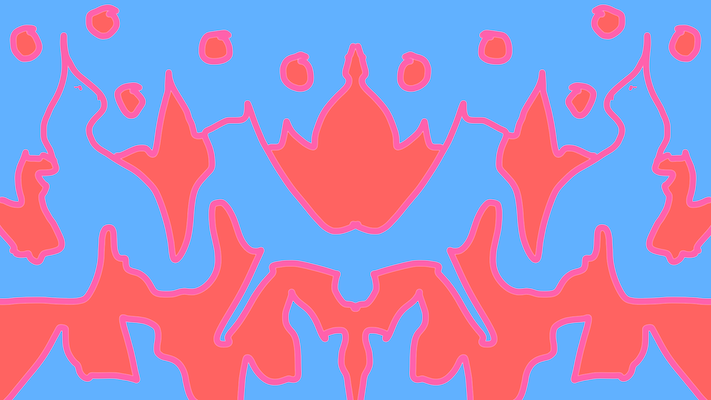
So we’re freaking out, we don’t know what to do—so we can just pay attention to what the body is doing (instead of that little voice).
I mean, we’re home, right? Who cares. So we can say, “I’m just gonna pay attention to what my body is actually doing right now. I’m stuck here with this hip drop, so I’m just gonna observe that hip drop.” And that little shift of attention changes everything.
Okay I’m doing this. Maybe I’ll make it a little smaller. Because that’s different. Maybe, move it in a little circle, because that’s different. Maybe now I just like the idea of a circle and I’ll just move into the circle. Because that’s different.
So that’s one avenue, to shift in to the body.
Another avenue is to shift out to the people (who may be the chairs and so forth), and say, “Hey, I’ve been doing this hip drop for 20 minutes, how about that, right? Pretty cool. Bet you can’t do that.”
Because the people want you to interact. The whole point is you, not what you’re doing. It’s that you’re there, it’s who you are and that you’re there, and that you’re present, and that’s what’s exciting that someone is there, interacting with them. Belly dance has no fourth wall.
Another avenue is to shift on to the music—just letting it in, enjoying it, letting it create a path for us. Take a moment to just stop and smell the roses—er, hear the music. Just rest and listen.
So when we start to freak out, we can notice it, and say, Okay, let’s just step back from that for a minute. And focus our attention on something else. The body. The room. The music.
Freaking out is a pattern.
That stuff in the head is a pattern. The shaming voice, the physical response to that—it’s an addictive pattern, often very old.
And anything that breaks that pattern—breaks the pattern. The more often we recognize it—Oh shit, this is that pattern again—the sooner we notice we’re re-enacting that pattern, the faster we can step away from it.
This can apply in many areas of life. Once you see it, notice it, observe it, you have the opportunity to change.
Here’s some music for that. Musique blues du sahara algerien
Love,
Alia
PS Tuning In starts tomorrow! The grounding strategies are another great way to feel more confident when improvising
Tuning In–Medicine for Modern Times
In these challenging times it is hard to feel grounded or confident–pandemics, fascism, racism–fear, grief, and rage are everywhere. How do we ground ourselves with love?
Tuning In comes from a Somatic Experiencing® (SE) and Dancemeditation perspective. It’s a half-hour Zoom chillout session for soothing and nourishing the body, mind, and spirit. It is designed to ease anxiety and restore wellbeing.
Will it cure the world’s ills? No.
Will it help us withstand them? Yes.
We’ll use gentle movement, breath, and body-based strategies to bring calm in the here and now. These strategies can be used any time to help the body feel more relaxed and grounded.
All are Welcome
Five Weeks, June 19 – July 31. Fridays, 4PM ET (no session July 3 or 24)
See this in your time zone Sessions are recorded (instructor only). Recordings are available for one week
Register here. Registration closes on Friday at 3:30 pm. https://aliathabit.com/shop/#trust/

